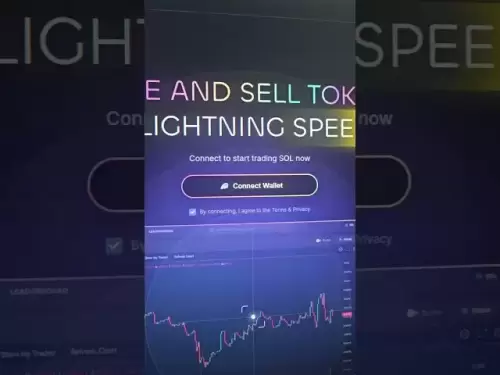-
 Bitcoin
Bitcoin $110,422.0076
0.79% -
 Ethereum
Ethereum $2,684.4747
5.39% -
 Tether USDt
Tether USDt $1.0003
0.01% -
 XRP
XRP $2.3427
1.24% -
 BNB
BNB $693.2936
2.54% -
 Solana
Solana $178.7568
1.54% -
 USDC
USDC $0.9997
-0.01% -
 Dogecoin
Dogecoin $0.2294
1.97% -
 Cardano
Cardano $0.7704
1.27% -
 TRON
TRON $0.2751
1.07% -
 Hyperliquid
Hyperliquid $38.1741
-0.36% -
 Sui
Sui $3.6742
4.91% -
 Chainlink
Chainlink $16.0034
2.65% -
 Avalanche
Avalanche $23.5757
1.58% -
 Stellar
Stellar $0.2900
1.41% -
 Shiba Inu
Shiba Inu $0.0...01462
1.88% -
 Bitcoin Cash
Bitcoin Cash $420.7534
0.91% -
 UNUS SED LEO
UNUS SED LEO $8.8538
-6.51% -
 Hedera
Hedera $0.1908
2.26% -
 Toncoin
Toncoin $3.0174
1.92% -
 Litecoin
Litecoin $96.6194
0.76% -
 Polkadot
Polkadot $4.6035
2.38% -
 Monero
Monero $385.5645
-5.36% -
 Bitget Token
Bitget Token $5.3696
1.39% -
 Pepe
Pepe $0.0...01418
3.79% -
 Pi
Pi $0.7558
-2.13% -
 Dai
Dai $0.9997
-0.01% -
 Ethena USDe
Ethena USDe $1.0006
0.01% -
 Aave
Aave $278.6388
5.00% -
 Uniswap
Uniswap $6.5674
1.14%
Is the MACD indicator suitable for short-term or long-term trading? How to optimize the usage method in different cycles?
The MACD indicator is versatile for crypto trading, effective in short-term and long-term strategies, with settings adjustable to optimize performance across different market cycles.
May 25, 2025 at 10:56 pm
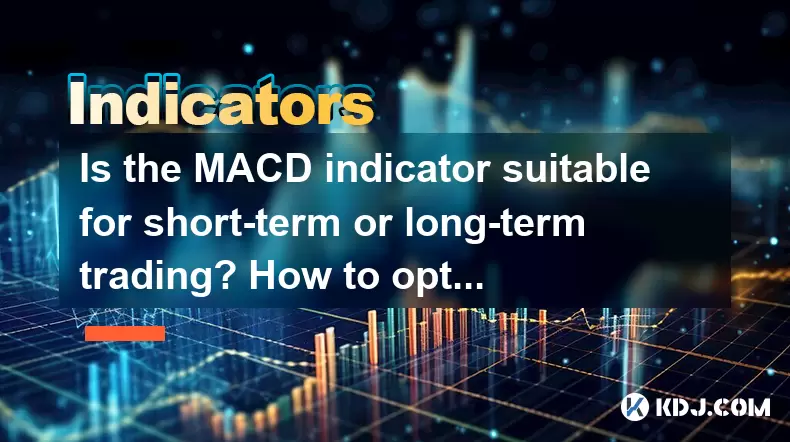
The Moving Average Convergence Divergence (MACD) indicator is a versatile tool used by traders in the cryptocurrency market to identify potential buy and sell signals. The question of whether the MACD is suitable for short-term or long-term trading, and how to optimize its usage in different cycles, is a crucial one for traders looking to maximize their effectiveness. This article will delve into the specifics of the MACD indicator, its application in various trading timeframes, and provide detailed guidance on optimizing its use.
Understanding the MACD Indicator
The MACD indicator is composed of two lines: the MACD line and the signal line, along with a histogram that represents the difference between these two lines. The MACD line is calculated by subtracting the 26-period Exponential Moving Average (EMA) from the 12-period EMA. The signal line is a 9-period EMA of the MACD line. The interaction between these lines and the histogram provides traders with insights into market momentum and potential trend reversals.
MACD for Short-Term Trading
In the context of short-term trading, the MACD can be particularly useful for identifying quick entry and exit points. Short-term traders, often looking at timeframes ranging from a few minutes to a few hours, need to be able to react swiftly to market changes. The MACD's sensitivity to price movements makes it an ideal tool for this purpose.
- Identify Crossovers: For short-term trading, pay close attention to when the MACD line crosses above or below the signal line. A bullish crossover (MACD line crossing above the signal line) can signal a potential buying opportunity, while a bearish crossover (MACD line crossing below the signal line) can indicate a selling point.
- Monitor the Histogram: The histogram's size and direction can also provide insights into the strength of the current trend. A growing histogram suggests increasing momentum, which can be a signal to enter a trade.
- Adjust Settings: For even more sensitivity, short-term traders might consider adjusting the MACD settings to shorter periods, such as using a 5-10-4 configuration (5-period EMA, 10-period EMA, and 4-period signal line) to capture rapid market movements.
MACD for Long-Term Trading
For long-term trading, where the focus is on trends that last days, weeks, or even months, the standard MACD settings (12-26-9) are often more appropriate. Long-term traders aim to capture larger market movements and are less concerned with short-term fluctuations.
- Focus on Major Crossovers: Long-term traders should prioritize significant crossovers that occur after prolonged periods of divergence between the MACD and signal lines. These crossovers can indicate the beginning or end of a major trend.
- Divergence Analysis: Pay attention to divergences between the MACD and price action. A bullish divergence (price making lower lows while the MACD makes higher lows) can signal a potential reversal to the upside, while a bearish divergence (price making higher highs while the MACD makes lower highs) can indicate a potential downtrend.
- Trend Confirmation: Use the MACD to confirm the direction of the trend. A consistently positive MACD value can confirm an uptrend, while a consistently negative value can confirm a downtrend.
Optimizing MACD Usage Across Different Cycles
To optimize the MACD for different trading cycles, traders need to adjust their approach based on the timeframe they are focusing on. Here are some strategies to consider:
- Customize Settings: Depending on the trading cycle, adjust the MACD settings to match the timeframe. Shorter timeframes might benefit from more sensitive settings, while longer timeframes might require less frequent signals.
- Combine with Other Indicators: Use the MACD in conjunction with other technical indicators, such as the Relative Strength Index (RSI) or Bollinger Bands, to confirm signals and reduce false positives. For example, a bullish MACD crossover combined with an RSI reading above 50 can provide a stronger buy signal.
- Backtesting: Before applying any changes to live trading, backtest different MACD settings and strategies on historical data to see which configurations perform best for your specific trading cycle.
Using MACD in Different Market Conditions
The MACD can be effective in various market conditions, but its performance may vary depending on whether the market is trending or ranging.
- Trending Markets: In a trending market, the MACD is particularly useful for identifying the continuation or reversal of trends. Traders can use the MACD to enter trades in the direction of the trend and exit when signs of a reversal appear.
- Ranging Markets: In a ranging market, the MACD might produce more false signals due to the lack of clear trends. Traders can mitigate this by using the MACD to identify overbought and oversold conditions within the range and adjust their trading strategy accordingly.
Practical Application of MACD in Cryptocurrency Trading
To illustrate how to apply the MACD in cryptocurrency trading, let's consider a practical example using Bitcoin (BTC).
- Short-Term Trading Example: Suppose you are trading BTC on a 15-minute chart. You notice a bullish crossover of the MACD line above the signal line, and the histogram starts to expand. This could be a signal to enter a long position. You would then monitor the trade, looking for a bearish crossover or a significant decrease in the histogram to exit the trade.
- Long-Term Trading Example: If you are trading BTC on a daily chart, you might observe a prolonged period of bearish divergence between the price and the MACD. A subsequent bullish crossover could signal a potential reversal, prompting you to enter a long position. You would hold this position until a bearish crossover or a significant bearish divergence appears.
Frequently Asked Questions
Q1: Can the MACD be used effectively in highly volatile cryptocurrency markets?
A1: Yes, the MACD can be effective in volatile markets, but traders should be cautious of false signals. Combining the MACD with other indicators and adjusting settings to match the volatility can help improve its reliability.
Q2: How often should I adjust the MACD settings based on market conditions?
A2: It depends on your trading style and the market's volatility. Short-term traders might need to adjust settings more frequently to capture rapid movements, while long-term traders can use more stable settings but should still monitor market conditions and adjust as necessary.
Q3: Is the MACD more suitable for certain cryptocurrencies over others?
A3: The MACD can be used across all cryptocurrencies, but its effectiveness may vary based on the asset's volatility and trading volume. More liquid cryptocurrencies like Bitcoin and Ethereum might provide more reliable signals due to their higher trading volumes.
Q4: Can the MACD be used alone, or should it always be combined with other indicators?
A4: While the MACD can be used alone, combining it with other indicators can help confirm signals and reduce the risk of false positives. Using the MACD in conjunction with tools like the RSI or moving averages can provide a more comprehensive view of market conditions.
Disclaimer:info@kdj.com
The information provided is not trading advice. kdj.com does not assume any responsibility for any investments made based on the information provided in this article. Cryptocurrencies are highly volatile and it is highly recommended that you invest with caution after thorough research!
If you believe that the content used on this website infringes your copyright, please contact us immediately (info@kdj.com) and we will delete it promptly.
- Trump Coin (TRUMP) Price Stabilizes After Initial Drop Following High-Profile Dinner Event
- 2025-05-28 01:15:13
- Pepe Coin (pepper)
- 2025-05-28 01:15:13
- Kaito (KAITO) token jumps 227% as ecosystem growth accelerates ahead of NVIDIA earnings
- 2025-05-28 01:10:13
- Monero's Rally Signals Strength, But Faces a Ceiling. Enter BlockDAG, the Quiet Contender
- 2025-05-28 01:10:13
- SUI, the native token of the Sui blockchain, is currently trading at $3.54
- 2025-05-28 01:05:14
- Trump Media Stock Drops 8% After Announcing $2.5B Bitcoin Treasury Plan
- 2025-05-28 01:05:14
Related knowledge
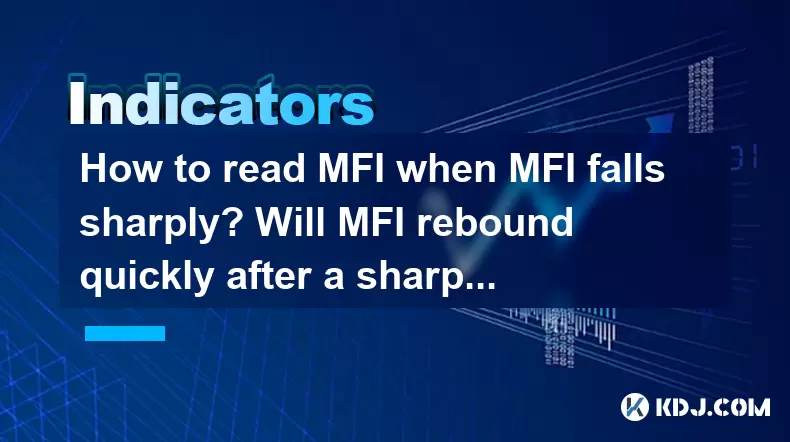
How to read MFI when MFI falls sharply? Will MFI rebound quickly after a sharp drop?
May 27,2025 at 12:01pm
Title: How to Transfer Bitcoin from Coinbase to Kraken Transferring Bitcoin from one exchange to another, such as from Coinbase to Kraken, is a common task for cryptocurrency enthusiasts. This process involves several steps, including withdrawing Bitcoin from Coinbase and depositing it into Kraken. Understanding how to do this safely and efficiently can...
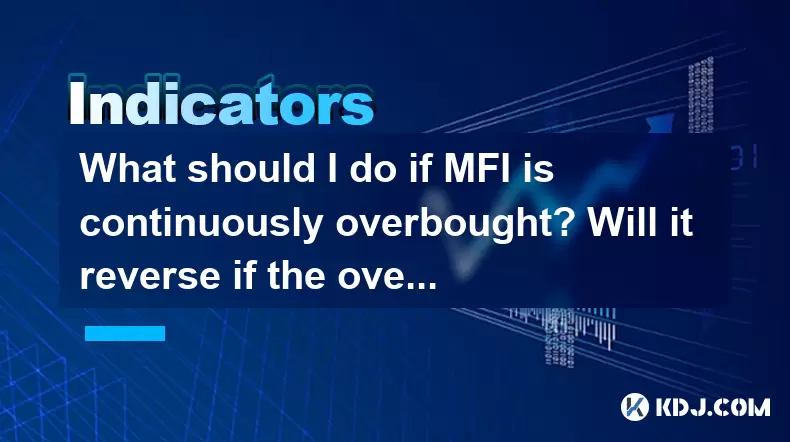
What should I do if MFI is continuously overbought? Will it reverse if the overbought lasts for a long time?
May 27,2025 at 11:21pm
When dealing with the Money Flow Index (MFI) in the cryptocurrency market, it's essential to understand its implications and how to navigate situations where the MFI remains continuously overbought. The MFI is a momentum indicator that measures the inflow and outflow of money into a security over a specific period. An MFI value above 80 typically indica...
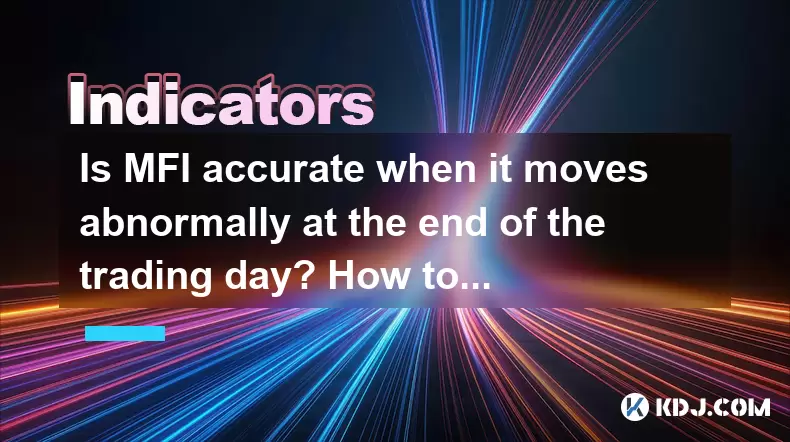
Is MFI accurate when it moves abnormally at the end of the trading day? How to interpret MFI when it rises at the end of the trading day?
May 27,2025 at 08:49pm
The Money Flow Index (MFI) is a popular technical indicator used by traders to assess the strength and sustainability of a price trend in the cryptocurrency market. It measures the inflow and outflow of money into a security over a specified period, often 14 days, and is commonly used to identify potential overbought or oversold conditions. However, the...

Is MFI accurate when the main force is washing the market? How to analyze MFI in the washing stage?
May 27,2025 at 05:56pm
Title: How to Secure Your Cryptocurrency Wallet: A Comprehensive Guide In the world of cryptocurrencies, securing your digital assets is paramount. Cryptocurrency wallets are the gateways to your digital funds, and ensuring their safety is crucial to prevent unauthorized access and potential loss. This comprehensive guide will walk you through various m...
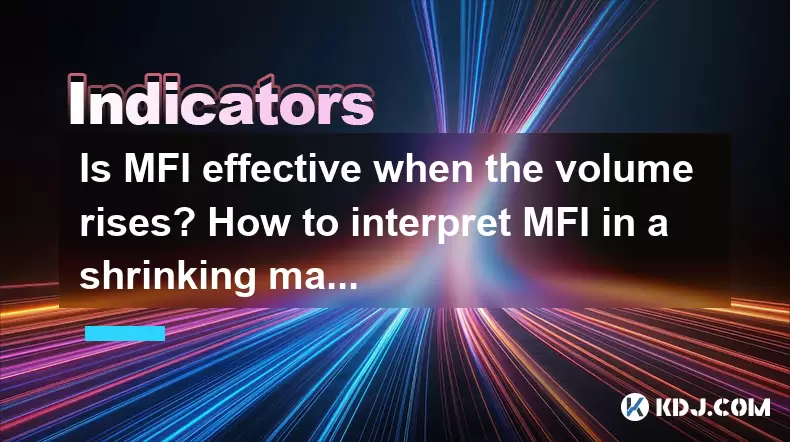
Is MFI effective when the volume rises? How to interpret MFI in a shrinking market?
May 27,2025 at 02:42am
The Money Flow Index (MFI) is a momentum indicator that measures the inflow and outflow of money into a security over a specific period. It is particularly useful in identifying overbought or oversold conditions in the market. In this article, we will explore the effectiveness of MFI when volume rises and how to interpret MFI in a shrinking market. Unde...
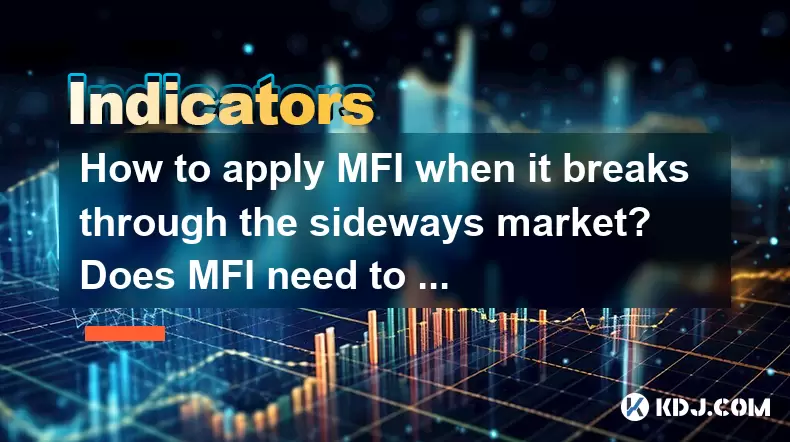
How to apply MFI when it breaks through the sideways market? Does MFI need to be combined with other indicators when it breaks through?
May 27,2025 at 09:08am
The Money Flow Index (MFI) is a momentum indicator that measures the inflow and outflow of money into a security over a specific period. When the MFI breaks through a sideways market, it can signal potential shifts in market sentiment and trading opportunities. Understanding how to apply MFI in such scenarios and whether it should be combined with other...

How to read MFI when MFI falls sharply? Will MFI rebound quickly after a sharp drop?
May 27,2025 at 12:01pm
Title: How to Transfer Bitcoin from Coinbase to Kraken Transferring Bitcoin from one exchange to another, such as from Coinbase to Kraken, is a common task for cryptocurrency enthusiasts. This process involves several steps, including withdrawing Bitcoin from Coinbase and depositing it into Kraken. Understanding how to do this safely and efficiently can...

What should I do if MFI is continuously overbought? Will it reverse if the overbought lasts for a long time?
May 27,2025 at 11:21pm
When dealing with the Money Flow Index (MFI) in the cryptocurrency market, it's essential to understand its implications and how to navigate situations where the MFI remains continuously overbought. The MFI is a momentum indicator that measures the inflow and outflow of money into a security over a specific period. An MFI value above 80 typically indica...

Is MFI accurate when it moves abnormally at the end of the trading day? How to interpret MFI when it rises at the end of the trading day?
May 27,2025 at 08:49pm
The Money Flow Index (MFI) is a popular technical indicator used by traders to assess the strength and sustainability of a price trend in the cryptocurrency market. It measures the inflow and outflow of money into a security over a specified period, often 14 days, and is commonly used to identify potential overbought or oversold conditions. However, the...

Is MFI accurate when the main force is washing the market? How to analyze MFI in the washing stage?
May 27,2025 at 05:56pm
Title: How to Secure Your Cryptocurrency Wallet: A Comprehensive Guide In the world of cryptocurrencies, securing your digital assets is paramount. Cryptocurrency wallets are the gateways to your digital funds, and ensuring their safety is crucial to prevent unauthorized access and potential loss. This comprehensive guide will walk you through various m...

Is MFI effective when the volume rises? How to interpret MFI in a shrinking market?
May 27,2025 at 02:42am
The Money Flow Index (MFI) is a momentum indicator that measures the inflow and outflow of money into a security over a specific period. It is particularly useful in identifying overbought or oversold conditions in the market. In this article, we will explore the effectiveness of MFI when volume rises and how to interpret MFI in a shrinking market. Unde...

How to apply MFI when it breaks through the sideways market? Does MFI need to be combined with other indicators when it breaks through?
May 27,2025 at 09:08am
The Money Flow Index (MFI) is a momentum indicator that measures the inflow and outflow of money into a security over a specific period. When the MFI breaks through a sideways market, it can signal potential shifts in market sentiment and trading opportunities. Understanding how to apply MFI in such scenarios and whether it should be combined with other...
See all articles























